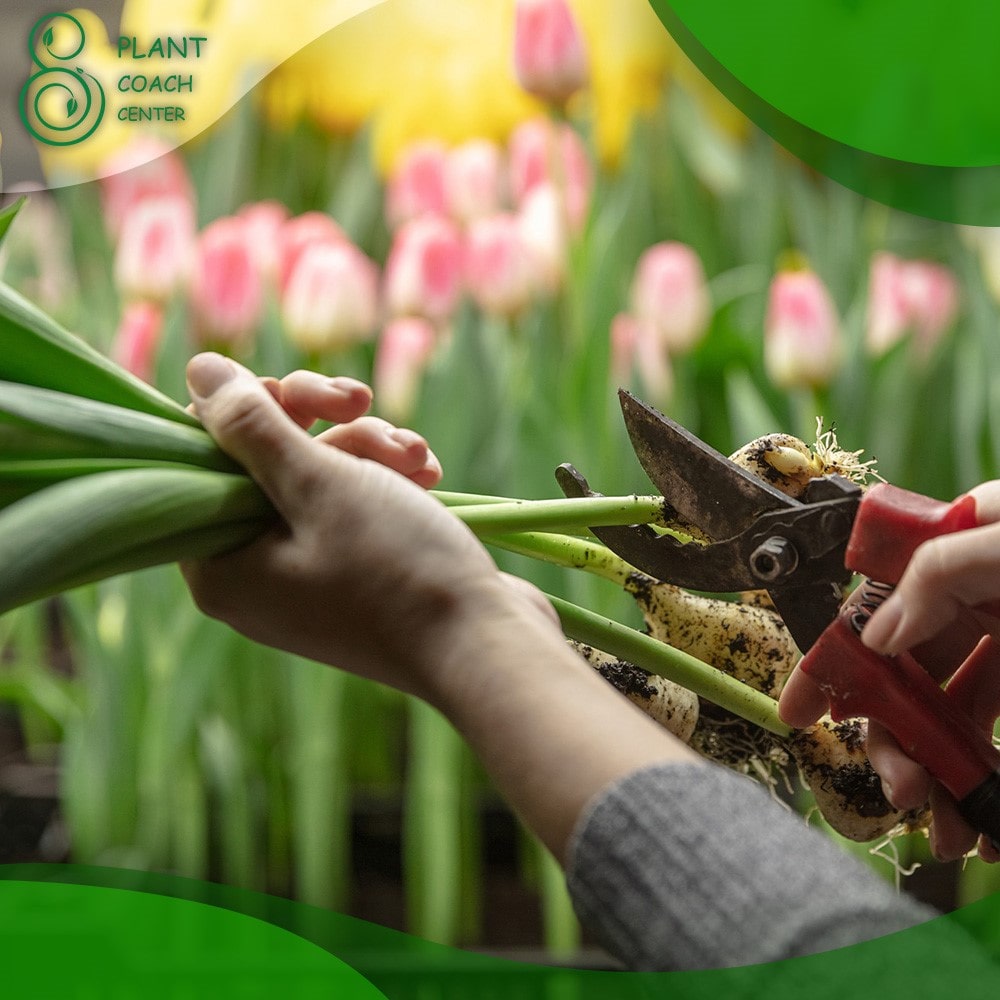When Can You Transplant Daffodils
Welcome to the enchanting world of daffodils, where the vibrant golden, ivory, and peach hues breathe life into gardens and landscapes alike. These delightful flowers, with their trumpet-shaped blooms and delicate, fluttering petals, have captured the hearts of gardeners and flower enthusiasts for centuries.
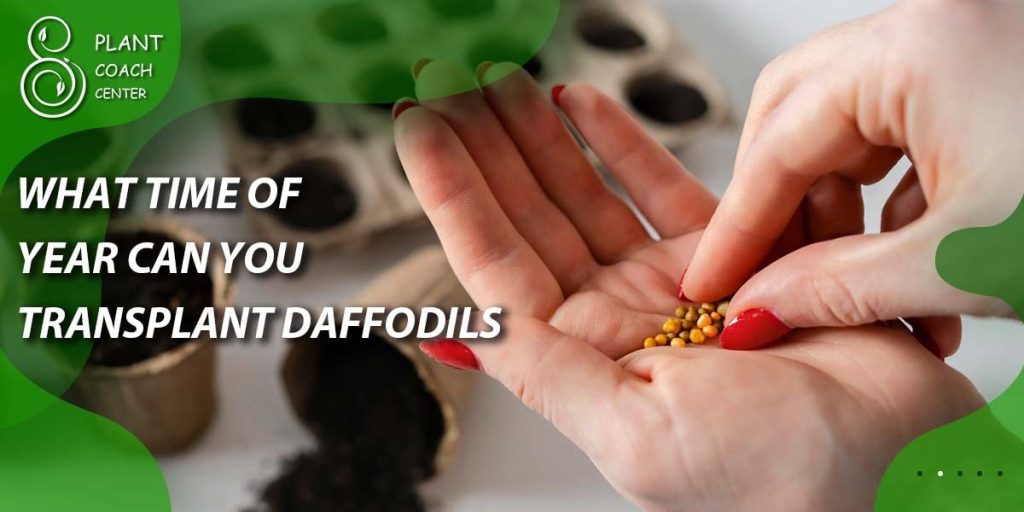
If you yearn to bring the charm of daffodils to a new location in your garden or wish to share their beauty with others, transplanting these delightful blooms may be the answer. However, mastering the art of daffodil transplantation requires an understanding of the optimal timing, suitable conditions, and essential techniques to ensure the successful transition of these floral treasures.
In this article, we embark on a journey to uncover the secrets of when and how to transplant daffodils, exploring the intricacies of this horticultural endeavor. Whether you’re a seasoned gardener or a budding green thumb, join us as we delve into the world of daffodil transplants, offering valuable insights and expert tips to cultivate a flourishing and vibrant daffodil display. Let’s embrace the spirit of change and watch as these resilient flowers bloom anew in their new abode.
Daffodils and the Dance of Seasons: Ideal Transplanting Times
Transplanting daffodils is a delicate process that requires careful consideration of the seasons. Understanding the ideal transplanting times is crucial for ensuring these beloved flowers’ success and continued growth. Timing is pivotal in determining when to undertake the transplanting endeavor, as daffodils have specific growth cycles that align with the changing seasons.
Spring Revival
The best time to transplant daffodils is in early spring when the ground is still moist from winter rains but not waterlogged. As the soil warms up and the first signs of growth emerge, daffodils enter an active development phase. Transplanting during this period allows the bulbs to settle into their new location before they shift their energy toward flowering.
Post-Flowering Rejuvenation
After daffodils have finished blooming and their foliage begins to yellow, the plants are still in active growth. This post-flowering period, usually in late spring to early summer, presents another opportune time for transplantation. Care must be taken to transplant the bulbs while the foliage remains intact, as the leaves play a vital role in replenishing the bulb for next year’s growth.
Autumn
A Season of Promise: While not as common as spring or post-flowering transplanting, autumn can also be a suitable time for daffodil transplantation. Late summer to early autumn is ideal, as the soil is warm from the fading summer heat, and the bulbs have a chance to establish their root systems before winter sets in.
The Art of Relocation: Choosing the Perfect Spot for Daffodil Transplants
When transplanting daffodils, selecting the right location is paramount to their growth and overall health. Like all plants, Daffodils have specific environmental preferences that can significantly impact their performance and blooming potential. Here are essential considerations to master the art of choosing the perfect spot for daffodil transplants:
Sun-Kissed Brilliance
Daffodils are sun-loving flowers, thriving in bright, direct sunlight. When selecting a site for transplantation, aim for a location that receives at least six hours of sunlight daily. Avoid areas with dense shade or competition from large trees or shrubs, as these can limit the amount of sunlight the daffodils receive and impact their ability to produce flowers.
Well-Drained Soil
Daffodils prefer well-draining soil to prevent bulbs from sitting in waterlogged conditions, which can lead to rot and disease. Sandy or loamy soil types promote good drainage and prevent soggy roots.
Adequate Air Circulation
Good air circulation prevents fungal diseases affecting daffodils. Avoid planting them in areas with poor air movement, such as tight corners or overcrowded beds.
Protection from Strong Winds
While daffodils appreciate good air circulation, they also benefit from some protection against solid and damaging winds. Planting them near a fence, wall, or other windbreaks can help shield the delicate blooms from being battered by gusts.
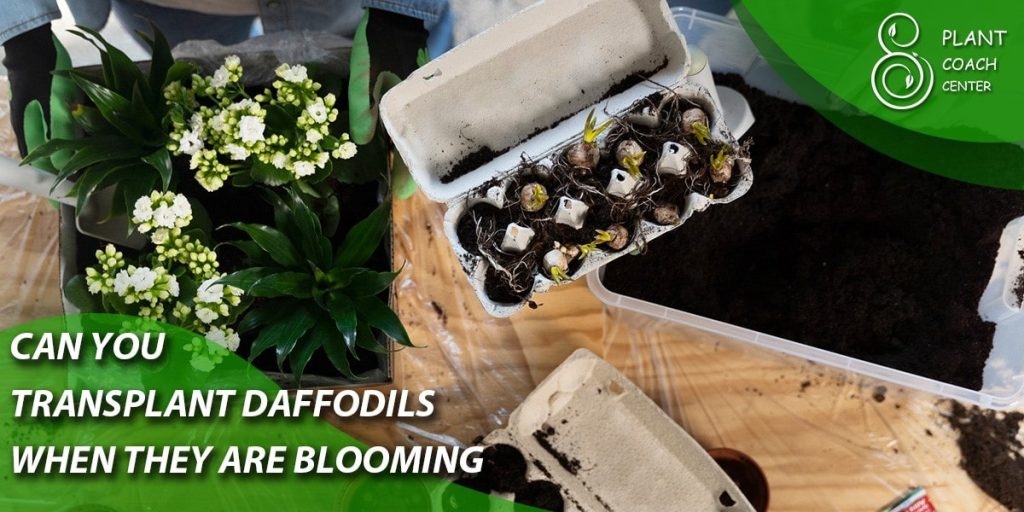
Natural Aesthetics
Consider the aesthetic appeal of your chosen spot. Daffodils can add a burst of color and beauty to various parts of your garden, including along pathways, under trees, in mixed flower beds, or as naturalized drifts in the lawn. Plan their placement to complement the overall landscape and provide a visually pleasing display.
Soil pH and Fertility
Daffodils prefer slightly acidic to neutral soil pH (around 6.0 to 7.0). Conduct a soil test to determine the pH level and Fertility of the soil. If necessary, amend the soil with organic matter and appropriate fertilizers to create the best possible growing conditions for your daffodils.
Weathering the Change: How Climate Impacts Daffodil Transplant Success
The climate of a region plays a significant role in determining the success of daffodil transplants. Daffodils, known for their resilience and ability to withstand diverse conditions, still have their limits regarding climate extremes. Understanding how climate impacts the transplant process is crucial for ensuring the health and longevity of these charming flowers in their new home.
Temperature Extremes
Daffodils are adapted to temperate climates and are typically hardy in USDA hardiness zones 3 to 9. Extreme cold or hot temperatures can be detrimental to newly transplanted bulbs. Frost can damage tender shoots, while prolonged heatwaves can cause stress and lead to premature dormancy or drying out of the bulbs.
Frost-Free Period
Timing is essential in transplanting daffodils, especially in regions with cold winters. Ensure the bulbs are transplanted with enough time to establish their root systems before the first hard frost. Aim for a transplant date in warmer climates when the temperatures have cooled down after the scorching summer heat.
Rainfall and Moisture
Daffodils prefer moderate moisture levels and well-draining soil. Excessive rainfall or waterlogged conditions can lead to bulb rot and other fungal diseases. On the other hand, prolonged drought can stress the plants and inhibit their growth. Understanding the natural rainfall patterns in your region and providing appropriate watering during dry spells is vital for daffodil transplant success.
Winter Dormancy Requirements
In regions with colder winters, daffodils require winter dormancy to thrive. The chilling period prompts the bulbs to bloom in spring. If you’re transplanting daffodils to a warmer climate, select varieties more adaptable to milder winters and may not require an extended chilling period.
Microclimates and Shelter
Within a larger region, microclimates may offer slightly different growing conditions. Identify areas with natural protection from harsh winds and temperature fluctuations. Planting daffodils in such sheltered spots can mitigate the impact of adverse weather elements.
Climate Change Adaptation
As climate patterns shift, it’s essential to consider how these changes may impact daffodil growth and bloom times. Monitor local climate trends and be prepared to adjust transplanting schedules or consider more climate-resilient varieties to adapt to the evolving environment.
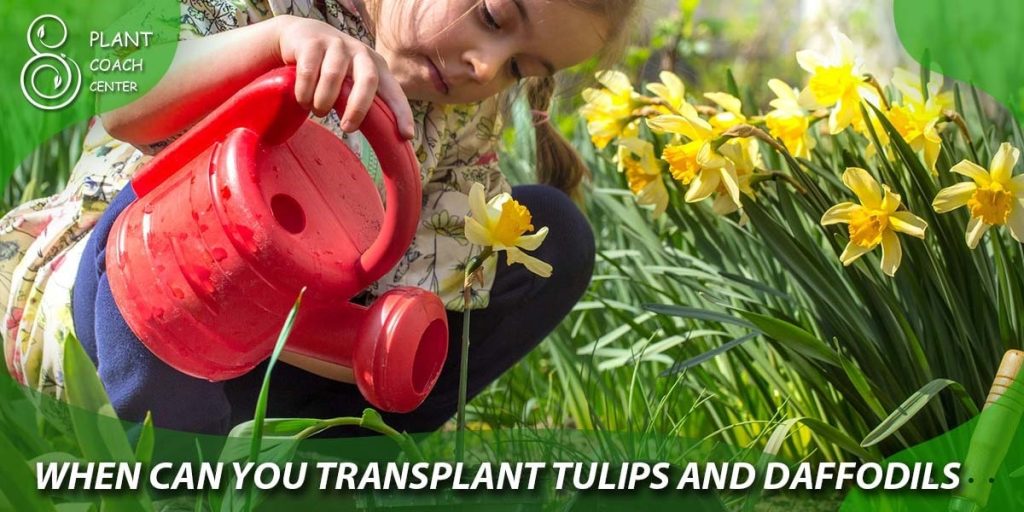
Propagation Potentials: Growing Daffodils from Transplants
Transplanting daffodils provides an opportunity to relocate these beautiful blooms and opens the door to your daffodil collection’s potential propagation and expansion. Growing daffodils from transplants can be a rewarding and cost-effective way to increase your daffodil display and share their beauty with others. Here’s a step-by-step guide to harnessing the propagation potentials of daffodil transplants:
Choose Healthy Bulbs
To ensure successful propagation, start with healthy daffodil bulbs for transplantation. Look for firm, plump bulbs free from signs of disease or damage. Larger bulbs tend to produce more substantial and vigorous offspring.
Transplanting Process
When transplanting daffodils, gently lift the bulbs from their original location, not damaging the roots or shoots. Prepare the new planting site, following the guidelines outlined in the previous sections, and place the bulbs at the appropriate depth (around 6 inches) with the pointed end facing up. Water thoroughly after planting.
Let Them Settle
Once transplanted, allow the daffodil bulbs time to settle into their new environment. They will focus on establishing their root systems and preparing for the next growing season.
Dividing Bulbs
As daffodils naturalize and multiply over the years, clusters of bulbs may become crowded. During the dormancy period (after the foliage has turned yellow), carefully dig up these clusters and gently separate the bulbs. Replant the individual bulbs with adequate spacing to allow for their future growth.
Caring for Offspring
Growing daffodils from transplants requires regular care and maintenance. Water the young bulbs during dry spells and provide a balanced fertilizer in early spring to support their growth. Removing spent flowers after blooming will redirect energy back into bulb development.
Be Patient
Propagation from transplants is a gradual process, and it may take a few years for the newly grown bulbs to reach maturity and produce their first blooms. Exercise patience and provide proper care to encourage healthy growth and blooming.
Reviving Daffodil Treasures: Transplanting Historic and Heirloom Varieties
With their captivating beauty and rich history, Daffodils often hold a treasure trove of historic and heirloom varieties. These timeless blooms have been cherished by generations, passing down their unique traits and stories from one gardener to the next. Transplanting historic and heirloom daffodil varieties revives their legacy and ensures their continued existence for future generations to enjoy. Here’s a heartfelt journey into the world of preserving and transplanting these precious daffodil treasures:
Researching the Past
Delving into the history of historic and heirloom daffodils is like unlocking a time capsule of botanical wonders. Conduct thorough research to identify these unique varieties, learning about their origins, characteristics, and significance in the horticultural world. Seek information from old gardening books, archives, and local gardening societies to piece together their stories.
Locating Rare Bulbs
Finding authentic bulbs of historic and heirloom daffodils can be a delightful quest. Seek out specialty bulb nurseries, heritage plant conservation organizations, or fellow gardeners passionate about preserving these timeless beauties. Engage in bulb exchanges or attend plant swaps to connect with like-minded enthusiasts who share your appreciation for these rarities.
Transplanting with Care
When transplanting historic and heirloom daffodils, treat each bulb with reverence and respect for its history. Ensure the transplant process is gentle and minimizes disturbance to the bulbs’ roots and shoots. Follow the guidelines for transplanting, choosing an appropriate location that aligns with the variety’s preferences.
Preserving Garden Heritage
Many historic daffodils were once found in old gardens, estates, or abandoned homesteads. Transplanting these treasured varieties from neglected sites saves them from potential extinction and preserves the garden heritage of past generations. It’s like cultivating a living museum of daffodils within your own garden.
Sharing the Story
As you revive these daffodil treasures, share their stories and significance with fellow gardeners and the wider community. Through education and storytelling, you can inspire others to join the mission of preserving historic and heirloom daffodils, thus ensuring their survival for years to come.
Recording Observations
Keep detailed records of your transplanting efforts, noting the variety, location, and any unique observations about the bulbs’ growth and blooming habits. Share your findings with botanical organizations or historical garden preservation groups to contribute to the collective knowledge of these precious daffodil varieties.
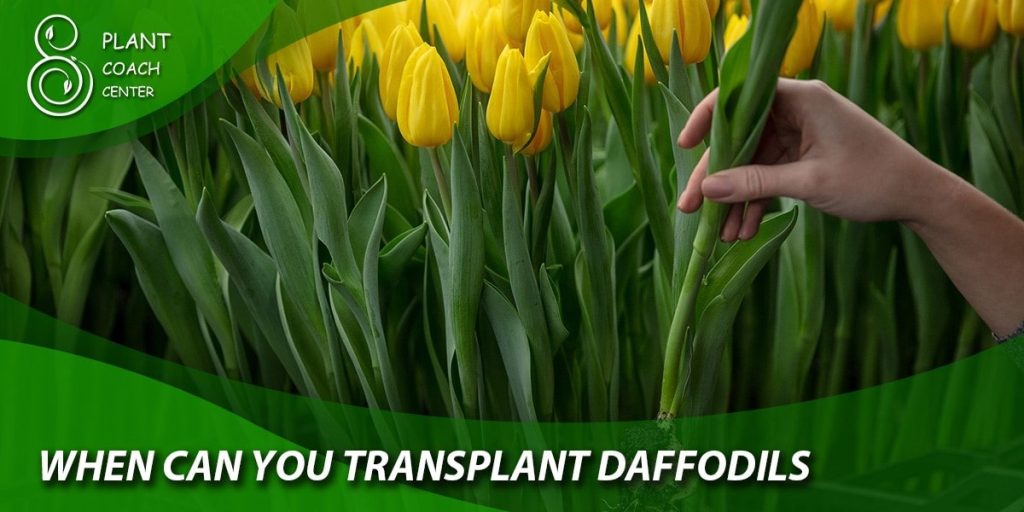
Troubleshooting Transplants: Common Issues and Solutions for Daffodils
While transplanting daffodils can be a rewarding experience, it may sometimes come with challenges that require a keen eye and proactive measures to ensure the success of your daffodil display. Understanding common issues that may arise during and after transplanting and knowing how to address them can make a significant difference in the health and vitality of your daffodils. Let’s explore some typical problems and the solutions to troubleshoot them:
Wilting or Drooping Foliage
Newly transplanted daffodils may experience wilting or drooping of their foliage due to transplant shock. To combat this, provide adequate water immediately after transplanting and ensure the soil remains consistently moist but not waterlogged. Mulch around the bulbs to help retain moisture and protect the roots during the transition period.
Limited or No Blooms
If your daffodils fail to produce blooms after transplanting, it could be due to insufficient sunlight or overcrowding. Ensure they receive at least six hours of direct sunlight daily and consider thinning out crowded areas, allowing more space for each bulb to grow and bloom freely.
Pests and Diseases
Daffodils are relatively resistant to pests and diseases but may occasionally face challenges such as aphids, slugs, or bulb rot. Inspect your daffodils regularly for signs of pest infestations or disease, and promptly apply appropriate treatments or remedies to prevent further damage.
Yellowing or Fading Foliage
After blooming, daffodil foliage may turn yellow and fade. This natural process is essential for the bulbs to store energy for the following year’s growth and flowering. Avoid cutting back the foliage prematurely, allowing it to wither and turn brown naturally before removal.
Overwatering or Poor Drainage
Excessive water can lead to bulb rot and other root-related issues. Ensure your daffodils are planted in well-draining soil and avoid overwatering, especially during rainy periods. Good drainage is vital for the long-term health of daffodil bulbs.
Transplant Shock
Daffodils may experience shock after moving to a new location. To reduce transplant shock, minimize root disturbance during transplanting, provide ample water, and avoid fertilizing immediately after transplanting. Adding a root stimulator solution during transplanting can also help the bulbs acclimate to their new environment.
Conclusion
In conclusion, the art of daffodil transplantation unveils a world of possibilities for gardeners, allowing them to create ever-changing landscapes that flourish with the timeless beauty of these sunny blooms. By understanding the ideal transplanting times, choosing the perfect location, and considering the impact of climate, gardeners can ensure the success of their daffodil transplants.
Moreover, embracing the propagation potentials of daffodils expands their collection and preserves historic and heirloom varieties, honoring their legacy for generations to come. While troubleshooting common issues may pose challenges, proactive measures and attentive care can overcome these obstacles, yielding a bountiful display of daffodils that revitalize gardens with enchanting allure.
As we cultivate our gardens with daffodil treasures, let us remember to share our knowledge and experiences, fostering a community of passionate gardeners dedicated to preserving and celebrating these captivating flowers. For more gardening insights and inspiration, visit plantcouchcenter.com, where you’ll find a wealth of resources to nurture your love for nature and explore the wonders of horticulture.
When is the best time to transplant daffodils?
The ideal times for transplanting daffodils are in early spring or after blooming in late spring to early summer.
How much sunlight do daffodils need for successful transplantation?
Daffodils thrive in bright, direct sunlight and require at least six hours of sun daily.
What should I do if my daffodils aren't blooming after transplantation?
Limited blooms may be due to insufficient sunlight or overcrowding; ensure they receive enough sunlight and consider thinning crowded areas.


